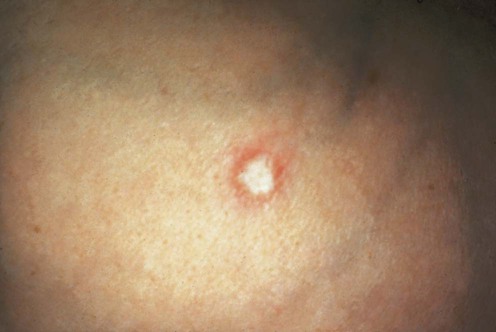Malignant atrophic papulosis

(From Lebwohl MG. The Skin and Systemic Disease: A Color Atlas, 2nd edn. Churchill Livingstone 2003, with permission of Elsevier.)
Second-line therapies
Third-line therapies

(From Lebwohl MG. The Skin and Systemic Disease: A Color Atlas, 2nd edn. Churchill Livingstone 2003, with permission of Elsevier.)
